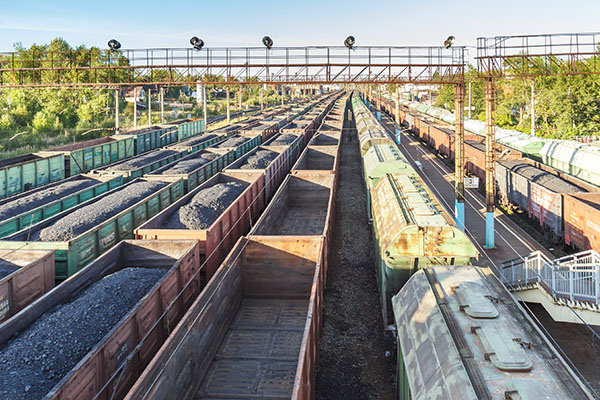Short line railroad tax maintenance credit could become permanent fixture
The short line railroad tax credit, known as 45G, may receive a permanent extension based on a tax package released by the House Ways and Means Committee last week.

The short line railroad tax credit, known as 45G, may receive a permanent extension based on a tax package released by the House Ways and Means Committee last week. When that happens, though, remains to be seen, as a date for a vote on the bill has not been scheduled yet.
At its core, 45G assists the 603 short line railroads in upgrading their track and bridges in order to handle modern freight cars, according to the American Short Line and Regional Railroad Association (ASLRRA), adding that under the terms of 45G a short line railroad must invest $1 for every 50 cents in credit up to a credit cap equivalent to $3,500 per mile of track while allowing the rail industry to spend more of their own revenue to make rail transport safer and more efficient for more than 10,000 United States customers.
The 45G tax credit, which expired on December 31, 2015, was implemented in 2005, and since that time the ASLRRA said that it has enabled short line and regional railroads to invest $4 billion into infrastructure, with 2,140 rail miles improved in 2015, the last year for which data was reported), 5.27 million ties replaced, with the short line industry doling out $1.12 million, or 24%, of revenue on infrastructure.
Along with the potential permanent expansion for 45G, a Morgan Stanley research report said that in exchange for making the credit permanent, the bill reduces the 45G tax credit from 50% to 30%. The firm noted that the 50% to 30% reduction is sensible in that it removes “the hassle of voting for a credit every year.
At last week’s Rail Trends conference in New York City, which was hosted by Progressive Railroading magazine and independent railroad analyst Tony Hatch, the topic of the 45G tax credit received a fair amount of attention.
Chuck Baker, a longtime Rail Trends speaker and president of the National Railroad Construction & Maintenance Association, said at the event that this 45G proposal would keep the same cap of $3,500 per track mile, coupled with lowering the rate from 50% to 30%.
“A railroad would have to spend more to get that big credit, but we think those railroads either are spending that much or will be able to with the incentive,” he said. “We think that is a good trade-off for permanency. And of the 26 extenders [in this bill], this is the only one that House Republicans proposed making permanent, and we thought that was a fantastic endorsement of its popularity.”
While this bill, should there be a vote before the current session of Congress ends, is likely to pass the House on a party line vote, Baker described its chances of passing the Senate, in order for it to be signed into law by President Trump, as icy, largely due to the fact that Democratic lawmakers were not initially consulted on the House side.
As previously reported, the ASLRRA has said that 45G “represents real and immediate infrastructure investment and job creation that preserves transportation and economic development opportunities.”
And on top of that, this legislation provides myriad benefits for railroad and intermodal shippers and carriers alike.
Railroad stakeholders have said that this is really about is about keeping short line railroad customers connected to the national railroad network with adequate and safe rail service, which makes this provision has such broad appeal.
There are more than 500 short line railroad carriers in 49 states, which serve as the first and last mile for more than 11,000 rail shippers. And preserving and upgrading short line railroad tracks is critically important to so many economies and communities throughout the U.S.
When freight railroads were deregulated in the U.S. in 1980 through the Staggers Act, there were 200 short line railroads, and today there are more than 550. Deregulation in effect encouraged the creation of short lines, which would have otherwise been abandoned, and short lines were previously owned by Class I railroads whom did not want to operate them anymore, because they were not part of the Class I’s core networks and were not financially viable for them, although they were financially viable for short line operators.
What’s more, abandoned short lines had suffered from decades of deferred maintenance, which supported the point of passing the tax credit to create a way of effectively lowering the costs of infrastructure upgrades so that more infrastructure upgrades could take place and preserve rail lines that would have otherwise been abandoned.

Article Topics
Rail & Intermodal News & Resources
Shipment and expenditure decreases trend down, notes Cass Freight Index Four U.S. railroads file challenges against FRA’s two-person crew mandate, says report U.S. rail carload and intermodal volumes are mixed, for week ending April 6, reports AAR LM Podcast Series: Examining the freight railroad and intermodal markets with Tony Hatch Norfolk Southern announces preliminary $600 million agreement focused on settling East Palestine derailment lawsuit Railway Supply Institute files petition with Surface Transportation Board over looming ‘boxcar cliff’ U.S. March rail carload and intermodal volumes are mixed, reports AAR More Rail & IntermodalLatest in Logistics
Shipment and expenditure decreases trend down, notes Cass Freight Index March trucking tonnage trends down, reports ATA FTR Shippers Conditions Index enters negative territory DAT March Truckload Volume Index sees modest March gains National diesel average, for week of April 22, is down for the second straight week UPS reports first quarter earnings decline LM Podcast Series: Assessing the freight transportation and logistics markets with Tom Nightingale, AFS Logistics More LogisticsAbout the Author
Subscribe to Logistics Management Magazine

Find out what the world's most innovative companies are doing to improve productivity in their plants and distribution centers.
Start your FREE subscription today.
April 2023 Logistics Management

Latest Resources














